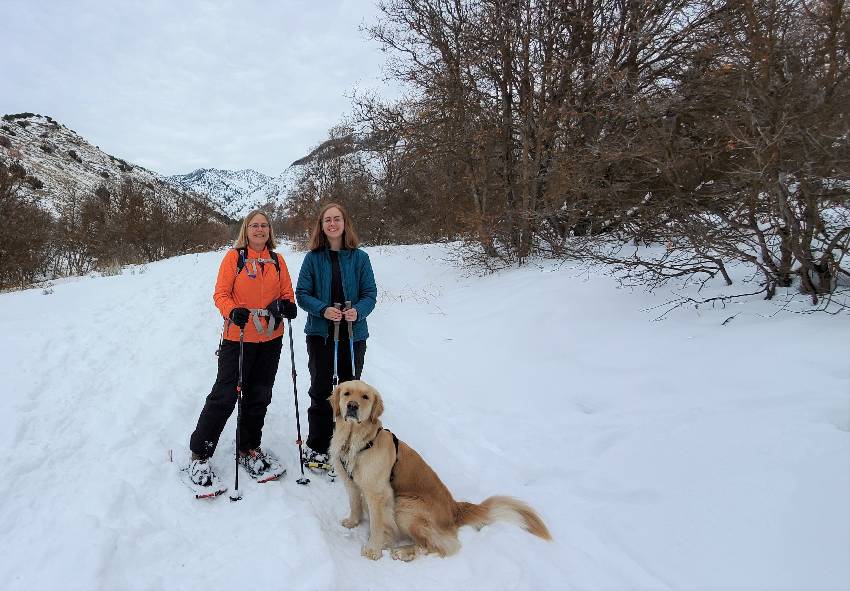Doctor's Orders: Trail Tips for Winter Hikes With Dogs

Doctor's Orders is a monthly column by veterinarians from the Utah State University School of Veterinary Medicine aimed at providing practical knowledge for producers in the Intermountain West. It appears in The Post Register's Intermountain Farm & West. This month's column is by Dr. Allison Willoughby.
Hiking trails are still covered in snow, but that doesn’t mean dogs and humans alike can’t enjoy them. Winter hikes offer dogs and humans a chance for exercise and contact with the natural world. However, ensuring your canine companion is safe and happy in the snow does take some planning.
Dogs have varying degrees of cold tolerance depending on breed, age, coat length, body fat, acclimatization, and fitness level, so a winter hike that is just right for one dog could be too much for another. Even the fittest use more energy and different muscles when moving through the snow compared a regular neighborhood walk, so be prepared to travel shorter distances than usual.
Before you leave
You don’t need expensive gear to enjoy a walk in the snow with your dog. That said, there are a few things you can do to ensure a positive experience.
First on the list is water. Both dogs and humans often don’t drink enough when hiking in the cold, so be sure to pack water or ensure there is a safe water source nearby. Eating snow will not keep a dog hydrated.
Ice balls can form between a dog’s toes and cause discomfort, so owners should trim the hair there and consider applying paw wax. Dog boots can protect against ice balls, abrasions, and salt on roads, but they need to be well-fitted to avoid causing sores. As with people, it’s best to break them in before taking a hike. Dog vests can protect the body but also need to be fitted.
Bring a leash for busy or treacherous trails and food for longer walks. Always bring poop bags, and be sure to pack the waste out.
On the trail
Humans need to be mindful of their surroundings and their companion’s body language. The signs of fatigue aren’t always obvious in an energetic dog, so watch out for subtle changes in behavior.
Ice balls are more likely to form in fur if snow is wet and heavy instead of powdery dry. If a dog is biting and pulling at toes or fur, it could be a sign of discomfort from ice. Shivering is an early sign of hypothermia, and standing hunched with tail down and ears back means a dog is no longer having a good time.
Water sources can also be dangerous in winter and early spring. Streams can be completely iced over but flowing underneath, creating a hidden hazard. Don’t expect your dog to know if the ice is thin or dangerous.
As snow cover waxes and wanes, a dog may discover carrion left over from hunters or winter kill. Be alert for carrion so you can divert your dog’s interest.
Injuries on the trail
Most injuries on winter hikes are to the paws. Ice crystals can be sharp, and the small cuts they leave may cause bits of blood to be left behind. Buried objects may cause puncture injuries. Pack a small bandage kit to get back to the trailhead in the event of an injured pad.
Slipping on ice can cause strains, sprains, or even ruptured ligaments. Falling and slipping injuries often occur when the dog first exits the car and toward the end of the walk when fatigue sets in. Not all dogs modulate themselves at the beginning of a hike, so try leashing your pup for 15 minutes to give them a chance to orient to surroundings and warm up muscles.
Enjoy the experience
Dogs love to be with us, but don’t be afraid to turn back if you notice your companion is starting to look uncomfortable or conditions are different than you anticipated. End on a positive note, and you’ll both want to come back for more.

